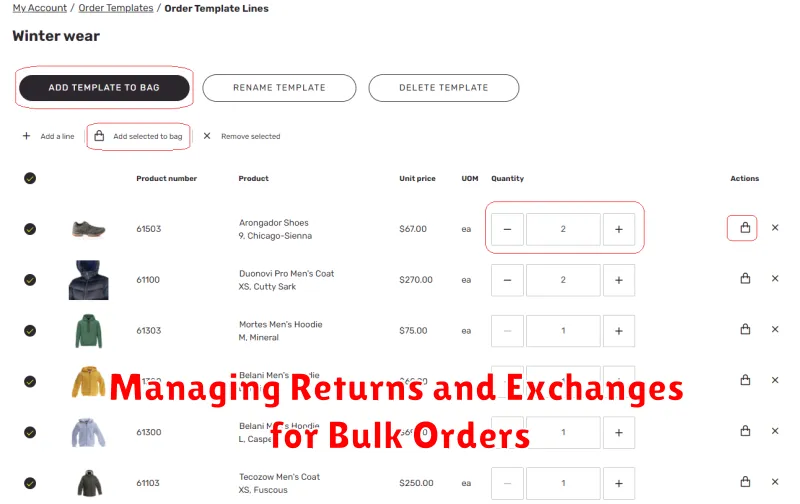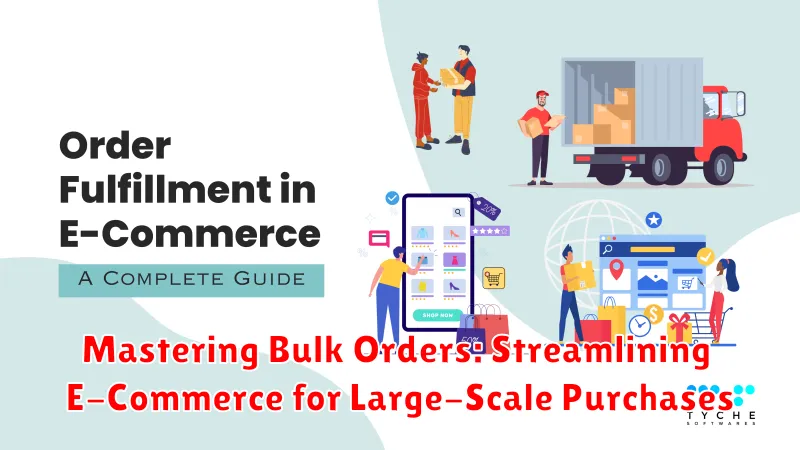In the dynamic landscape of e-commerce, effectively managing bulk orders is crucial for scaling your business and maximizing profitability. This article provides a comprehensive guide to mastering large-scale purchases within the e-commerce ecosystem. We will explore the challenges and opportunities associated with processing bulk orders and delve into strategies for streamlining your operations to accommodate these larger transactions. Whether you’re a seasoned online retailer or just starting out, understanding the nuances of bulk order management is essential for sustained growth and success in the competitive e-commerce marketplace. Learn how to optimize your platform and fulfillment processes for large-scale purchases and unlock the full potential of your online business.
From inventory management and order processing to shipping logistics and customer service, handling bulk orders requires a distinct approach compared to individual sales. This guide will equip you with the knowledge and tools necessary to streamline your e-commerce operations for large-scale purchases. Discover how to efficiently process bulk orders, negotiate favorable pricing with suppliers, and maintain excellent customer satisfaction even with increased order volumes. Mastering the art of bulk order fulfillment will enable you to expand your customer base, boost revenue streams, and establish your business as a leader in the e-commerce landscape.
Defining Bulk Orders and Their Importance
Bulk orders represent a significant purchasing model within e-commerce, characterized by the large quantities of products purchased in a single transaction. These orders differ from standard individual purchases due to their volume and often involve negotiated pricing. A clear definition is crucial for establishing processes and policies specific to these transactions.
Bulk ordering plays a vital role in both B2B and B2C environments. For businesses (B2B), bulk orders are essential for stocking inventory, supplying materials, and managing operational needs. For individual consumers (B2C), bulk purchases often arise from events, large families, or a desire to secure significant discounts. Understanding the motivations behind bulk purchases is essential for tailoring services and offers.
The importance of bulk orders stems from their potential to increase revenue and build stronger customer relationships. By catering to large-scale purchases, businesses can optimize their operations for higher sales volumes and cultivate loyalty with key clients or customer segments.
Setting Up a System for Bulk Order Processing
Efficiently handling bulk orders requires a dedicated system separate from standard e-commerce processing. This ensures a streamlined workflow and prevents bottlenecks.
Automation is key. Integrate your e-commerce platform with inventory management and order processing software. This allows for real-time inventory updates and automated order confirmations.
Dedicated customer service representatives for bulk orders can personalize the experience and address specific client needs. This proactive approach minimizes potential issues and fosters strong business relationships.
A clear internal communication system is crucial. This ensures all relevant departments, from sales to shipping, are informed about incoming bulk orders and their progress. Regular updates and transparent communication minimize errors and delays.
Finally, establish a flexible order processing framework. This should accommodate custom quotes, negotiated pricing, and potentially varied shipping arrangements, all common in bulk purchasing scenarios. Flexibility within the system is key to addressing the unique needs of each bulk order.
Pricing Strategies for Bulk Orders
Attracting and retaining bulk buyers hinges on implementing effective pricing strategies. Tiered pricing is a common approach, where discounts increase with the volume purchased. This incentivizes larger orders and rewards customer loyalty.
Volume discounts offer a straightforward percentage reduction based on order size. For example, a 10% discount might apply to orders exceeding 100 units. Customer-specific pricing can be used for key accounts or long-term partnerships, negotiating bespoke discounts based on projected purchase volumes.
Product bundling presents another avenue, packaging related items together at a discounted price compared to individual purchases. This encourages higher spending per order and can help clear out excess inventory. Carefully analyze your profit margins and operating costs to ensure profitability even with discounted bulk pricing.
Inventory Management for Bulk Orders
Effective inventory management is crucial for fulfilling bulk orders without disrupting regular sales. Forecasting demand is the first step. Analyze historical data, industry trends, and upcoming promotions to predict bulk order frequency and volume.
Reserved stock can prevent stockouts when large orders are placed. Designate a portion of your inventory specifically for bulk purchases, ensuring sufficient supply for both individual and large-scale customers.
Real-time inventory tracking is essential. Implement a system that automatically updates inventory levels as orders are processed. This provides accurate insights into available stock, enabling prompt communication with customers about potential delays or backorders.
Organize your warehouse efficiently to facilitate quick and accurate picking and packing of bulk orders. Dedicated packing stations for large orders can improve efficiency and reduce errors.
Streamlining the Checkout Process
A streamlined checkout is crucial for bulk orders. Efficiency is key to converting large-scale purchases. A complicated or lengthy process can lead to cart abandonment and lost revenue.
Consider offering quick order forms that allow customers to upload CSV files with product SKUs and quantities. This bypasses the need to add each item individually.
Pre-filled customer information can also expedite the process. If a customer is already logged in, their billing and shipping details should be automatically populated.
Multiple payment options are essential. Offer various methods, including credit cards, wire transfers, and purchase orders, to cater to diverse business needs. Clearly display payment terms and any associated fees.
Finally, ensure a clear order summary is presented before confirmation. This should include all items, quantities, pricing, discounts, and shipping costs. A final review step allows customers to verify all details before finalizing the purchase.
Shipping and Handling Large Orders

Efficient shipping and handling are crucial for bulk orders. This involves strategic planning and optimized logistics to ensure timely and cost-effective delivery.
Consider offering multiple shipping options to cater to diverse customer needs and budgets. This could include standard, expedited, and freight shipping.
Packaging plays a vital role in protecting goods during transit. Use sturdy boxes, adequate padding, and proper labeling to minimize damage. Palletizing large orders can further enhance stability and ease of handling.
Real-time tracking is essential for transparency and customer satisfaction. Provide customers with regular updates on their shipment’s progress.
Collaborating with reliable shipping partners is key. Negotiate competitive rates and establish clear service level agreements to ensure smooth operations.
Customer Service for Bulk Buyers
Proactive communication is key when dealing with bulk orders. Keep customers informed about order status, potential delays, and tracking information. Dedicated communication channels, such as a dedicated account manager or a prioritized support line, can significantly enhance the customer experience.
Personalized service makes a significant difference. Understand the specific needs of bulk buyers, which might include customized packaging, labeling, or delivery schedules. Offering tailored solutions fosters strong relationships and encourages repeat business.
Address inquiries promptly and efficiently. Bulk purchases often involve complex logistics and require quick resolution of any issues that may arise. A well-trained customer service team equipped to handle bulk order inquiries is essential.
Flexible payment options can facilitate larger transactions. Offering options like net terms, credit lines, or wire transfers can simplify the purchasing process for bulk buyers.
Managing Returns and Exchanges for Bulk Orders

Handling returns and exchanges for bulk orders requires a distinct approach compared to individual purchases. Clarity and efficiency are paramount to minimize disruption and maintain positive customer relationships.
Establish a clear Return and Exchange Policy specifically for bulk orders. This policy should outline acceptable reasons for returns, the timeframe for initiating a return, and any restocking fees that may apply. Clearly communicate this policy to bulk buyers before purchase.
Consider offering a dedicated point of contact for bulk buyers to manage returns and exchanges. This streamlines communication and ensures a more personalized experience.
Restocking fees for bulk orders may differ from standard return policies. Factor in the logistical complexities and potential impact on inventory when determining appropriate fees.
Develop a streamlined process for receiving and processing returned bulk items. This may involve designated receiving areas, specialized handling procedures, and efficient inventory tracking.
Scaling Your Business to Accommodate Bulk Orders
Successfully managing bulk orders requires a scalable business infrastructure. This encompasses various aspects of your operations, from inventory management to order fulfillment.
Inventory management is crucial. Implement a system that provides real-time visibility into stock levels. This allows you to accurately assess your capacity to fulfill large orders and avoid overselling. Consider investing in inventory management software that integrates with your e-commerce platform.
Order fulfillment processes need to be streamlined. Evaluate your current warehousing and shipping procedures. Can they handle a significant increase in order volume? Explore options like third-party logistics (3PL) providers to outsource fulfillment if necessary. This can free up your internal resources to focus on other aspects of business growth.
Automation is key to scaling efficiently. Automate tasks such as order processing, inventory updates, and shipping label generation. This reduces manual effort and minimizes the risk of errors associated with high-volume orders.

